History & Geology
The Goldfield Mining District, Nevada—Part II
July 2017 by Chris Ralph
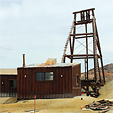 The majority of the gold produced in Goldfield has come from ores that are close enough to the surface to be oxidized by the air. This oxidized ore is normally a soft, shattered, earthy material usually stained yellow to brown by oxides of iron.
The majority of the gold produced in Goldfield has come from ores that are close enough to the surface to be oxidized by the air. This oxidized ore is normally a soft, shattered, earthy material usually stained yellow to brown by oxides of iron.
The Silver, Gold and Gemstones of Candelaria, Nevada
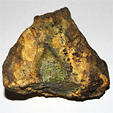 The Candelaria area is of interest to prospectors not just for silver, gold and other metals, but also for the beautiful gemstones found there.
The Candelaria area is of interest to prospectors not just for silver, gold and other metals, but also for the beautiful gemstones found there.
Gold Refining In The Ancient World
Gold in The Silver Crown District, Wyoming
 When my field assistant Jay Roberts and I entered the mine, it appeared as if someone just walked out of the mine, turned off the lights and never returned.
When my field assistant Jay Roberts and I entered the mine, it appeared as if someone just walked out of the mine, turned off the lights and never returned.
The Seven Troughs Mining District
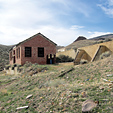 The favorable geology of the northeastern and central parts of the Seven Troughs Range are the parts most interesting to prospectors. They are underlain by a thick sequence of Tertiary volcanic rocks, mostly rhyolites and andesites.
The favorable geology of the northeastern and central parts of the Seven Troughs Range are the parts most interesting to prospectors. They are underlain by a thick sequence of Tertiary volcanic rocks, mostly rhyolites and andesites.
Crystallized Gold Mines of California
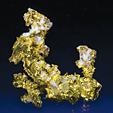 Gold specimens that include visible crystal formations are among the rarest, most attractive and most valuable forms of gold to be found.
Gold specimens that include visible crystal formations are among the rarest, most attractive and most valuable forms of gold to be found.
Gold Rush Continues in Africa
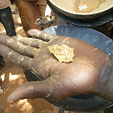 …some miners are doing exceptionally well… with a few obtaining amounts estimated in the millions of dollars.
…some miners are doing exceptionally well… with a few obtaining amounts estimated in the millions of dollars.
Eastern Arizona: Gold and Base Metal Deposits—Part I
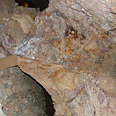 Arizona is well-known for its copper-gold porphyries and massive base metal-gold sulfide deposits such that primary gold deposits in the state are often overshadowed.
Arizona is well-known for its copper-gold porphyries and massive base metal-gold sulfide deposits such that primary gold deposits in the state are often overshadowed.
Subscription Required:
The Bawl Mill
• Ask The Experts: What is a Spanish needle?
• Ask The Experts: Sulfides and fluxes
• Legislative and Regulatory Update
• Simple Rules of Gold Geology: Comparing Epithermal and Mesothermal Deposits
• The "Madonna Nugget"—A Weekend Hunt to Remember
• Sunset Sunbaker
• A Prospecting Adventure in Mexico
• Critical Minerals: Tungsten
• Police Urge Author to End Treasure Hunt
• Melman on Gold & Silver
• Mining Stock Quotes and Mineral & Metal Prices
Free:
MMAC Update







